This news item expired on Sunday, October 18, 2020 so the information below could be outdated or incorrect.
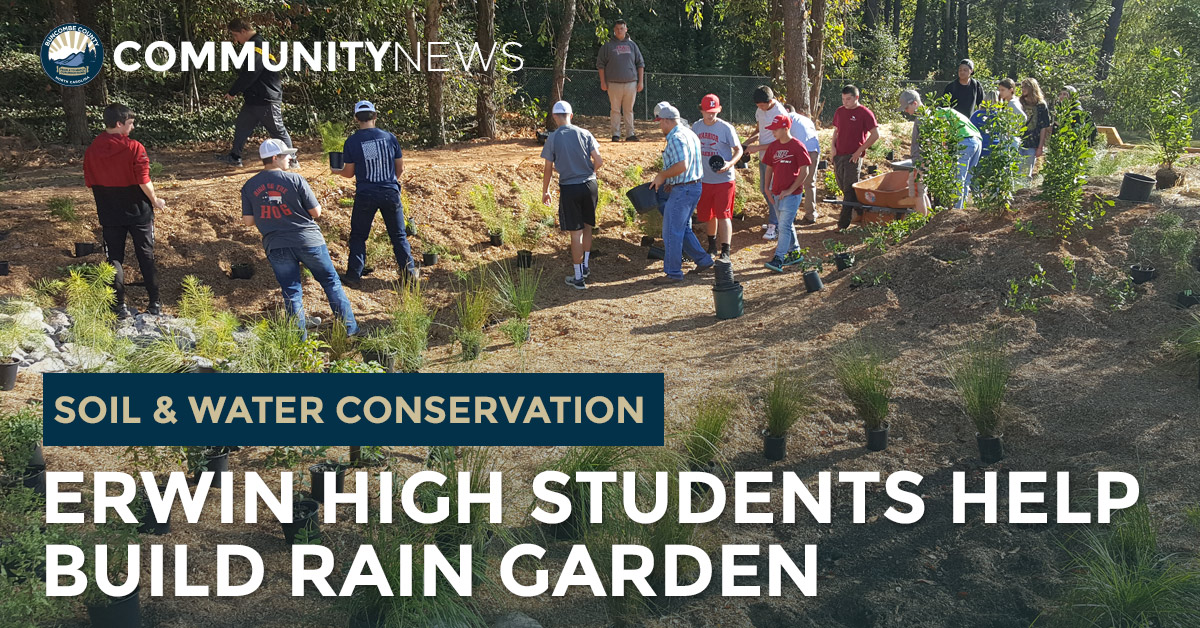
The forecast called for excited students with a mix of experiential learning. Recently, Buncombe County Soil & Water Conservation teamed up with students from Erwin High School and Agriculture teacher Michael Holt for a project that helped the community and provided a hands-on science lesson. At issue was helping mitigate stormwater runoff by creating a wetland. “This project will treat runoff from grassed areas, a parking lot, and a portion of the roof. Typically, parking lots contain more pollutants such as heavy metals and petroleum products,” explains Soil & Water Director Gary Higgins. Ultimately, the wetland captures runoff and pollutants are broken down by plants and the organic layer in the wetland.
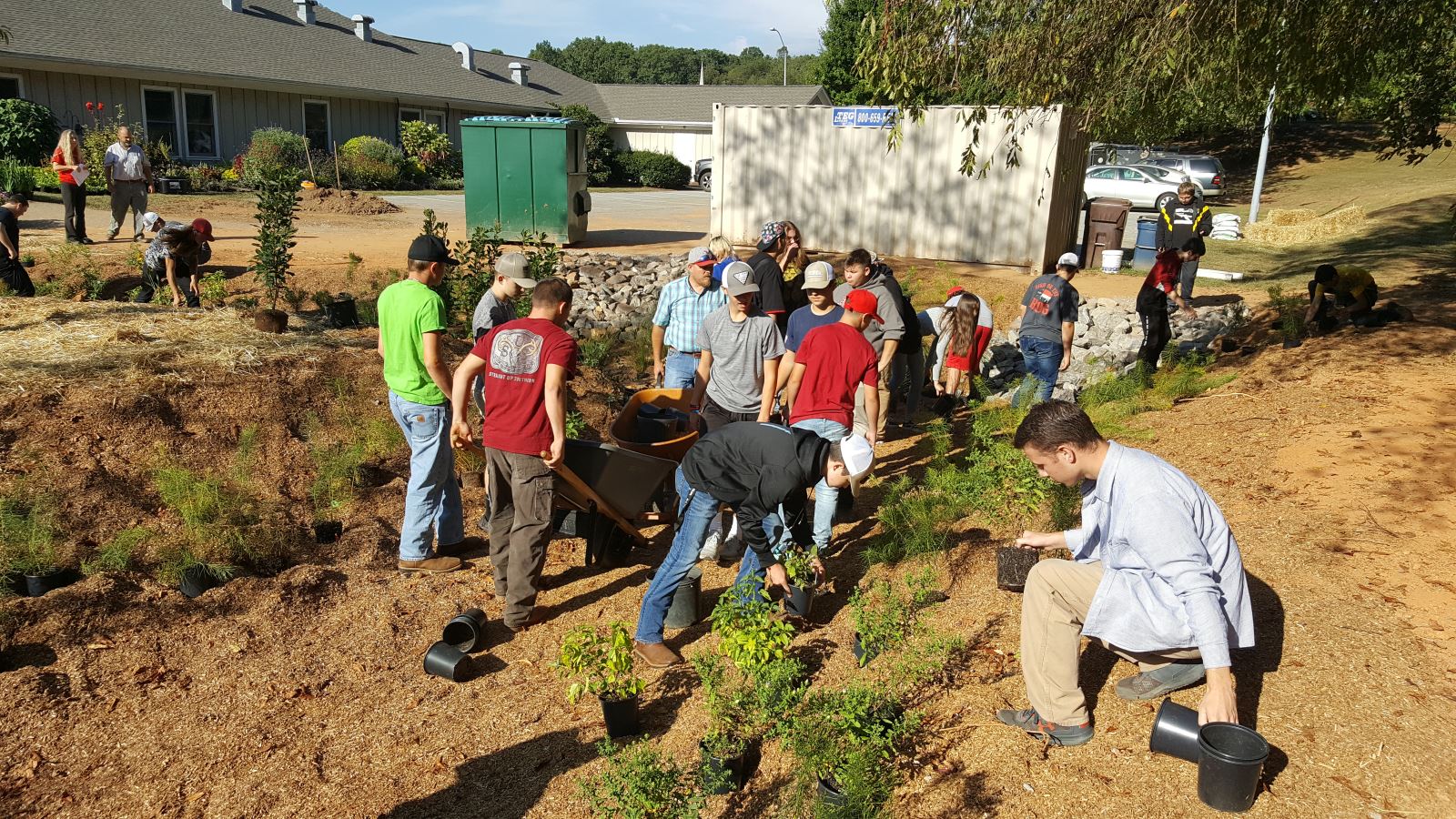
The students helped construct the wetland while also learning about pollutants, water quality, and how stormwater runoff affects the ecology. “It was fun getting to plant the wetland project. It was a blessing to do something that will help our community and wildlife for years to come,” exclaims Jason Gills, a freshman at Erwin High and Future Farmers of America (FFA) member. “The project was educational because I learned about new plants and animals that live in wetland habitats.”
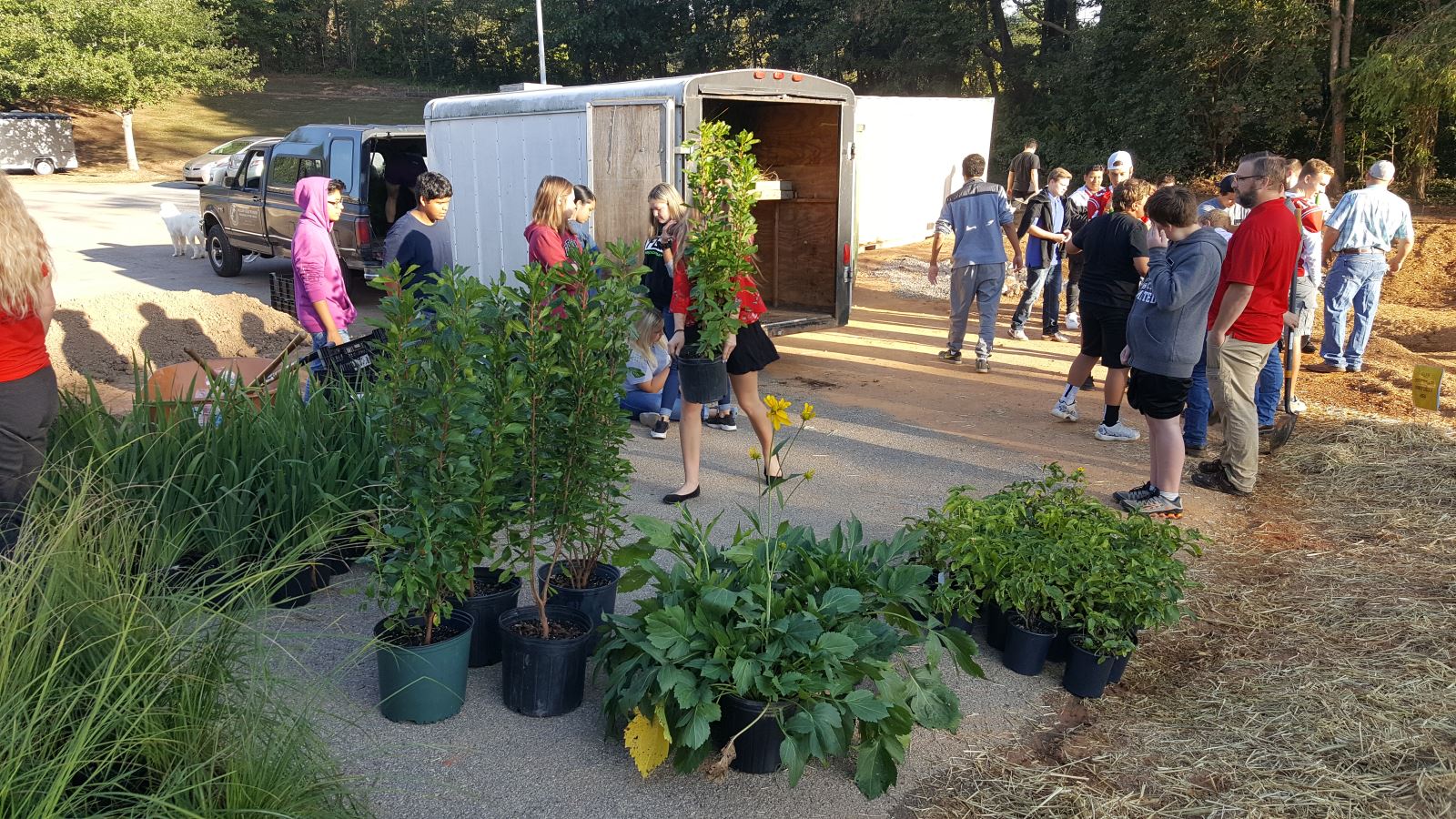
The wetland project is part of North Carolina Soil & Water’s Community Conservation Assistance Program, a statewide initiative aimed at improving water quality in urbanized areas. The program offers landowners a 75 percent cost share on 14 conservation practices commonly used to control pollutants entering the state’s waters. It’s also a great way to get students involved in their neighborhood while providing experiential learning opportunities. “I love getting students involved… they can see firsthand how and why we should protect our natural resources,” notes Soil & Water Environmental Educator Taira Lance. “It gives them a great sense of accomplishment to see the stormwater wetland completed and functioning. It empowers them to become environmental stewards and share their learning experiences with other students.”
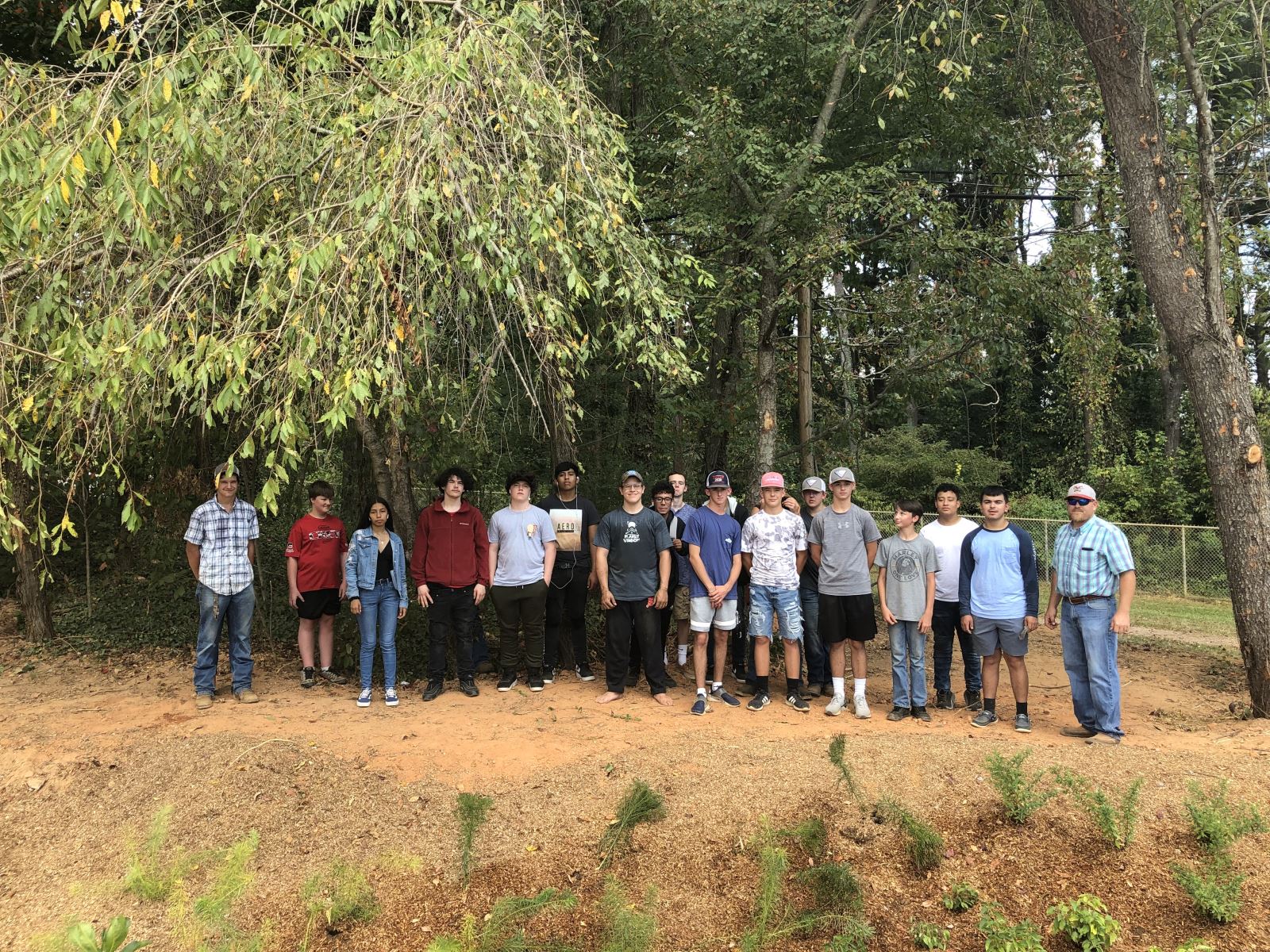
And sometimes students just dig not being in the classroom. “I really enjoyed doing the wetland project. I think it's a great idea for people to take a break from technology and do something outside,” adds Kamryn Ingle, Erwin High freshman and FFA member.
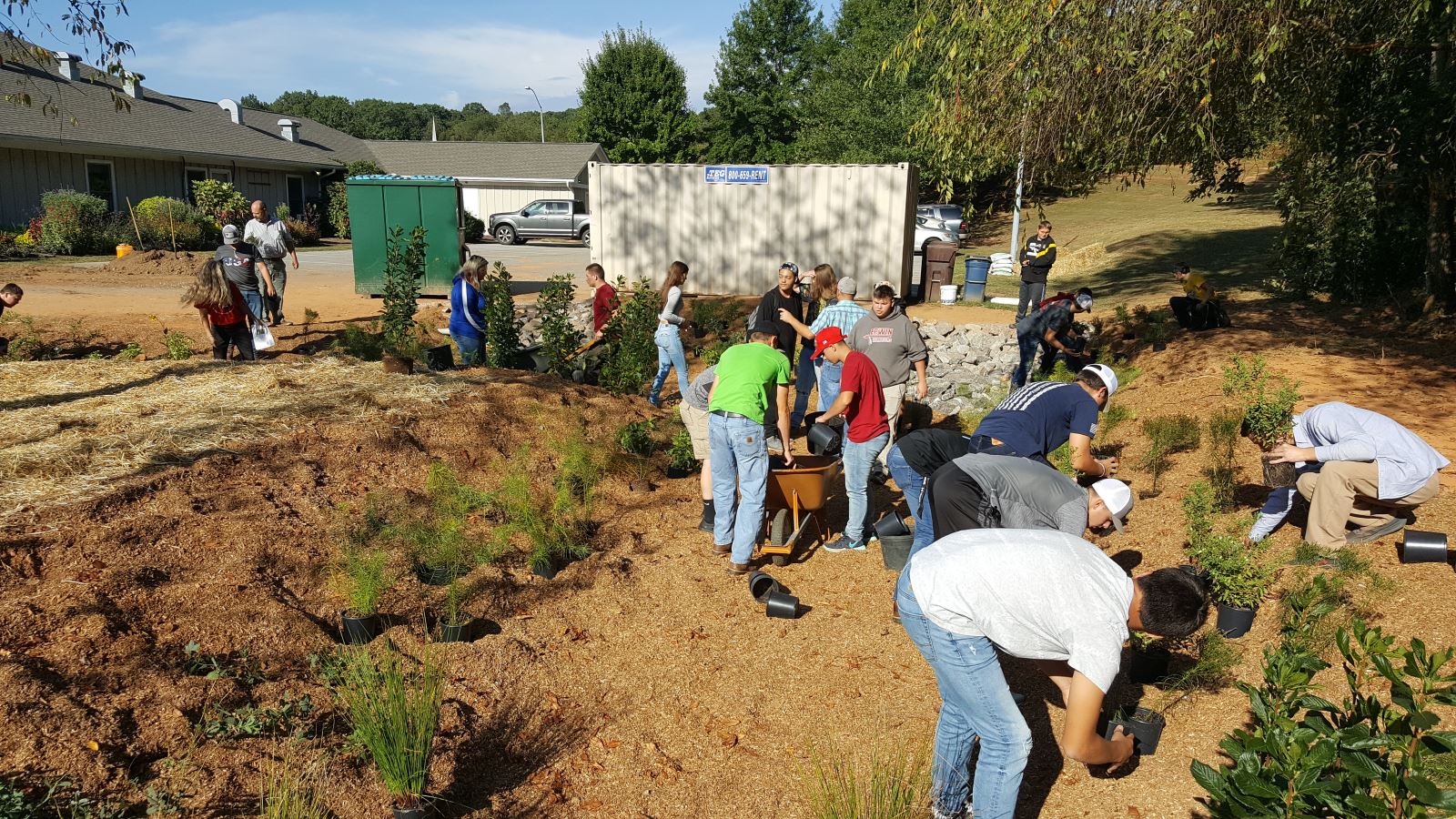
More about wetland construction
These structures are designed by a professional engineer and hold runoff from a one-inch rain. The construction process involves excavating material from the landscape, and in the case of this wetland, placing a clay soil liner in the bottom to enable it to hold water for longer periods of time. A constructed wetland needs to hold stormwater for a period of three days to be effective. After the grading is complete, a layer of hardwood mulch is added and plants are brought in that are especially suited for wetland environments.
Want to apply to the Community Conservation Assistance Program?
Citizens can apply by contacting the Soil and Water Conservation District. Applications are then ranked and the highest ranked are sent to the regional application pool to be considered for funding.